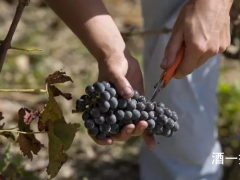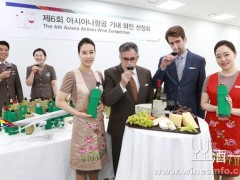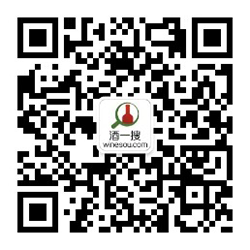6月3-7日,160多位葡萄酒大师候选人在伦敦、旧金山和阿德莱德参加了“葡萄酒大师(MW)考试”。在这段时间中,考生们需要完成3份品酒试卷,以及5份理论试卷。
品酒考试分三场,需要盲品12款酒,然后做5份理论试卷,主要涉及葡萄种植、酿酒、葡萄酒商务、当代问题等。
考试结束后,葡萄酒大师协会公布了今年葡萄酒大师考试的试题,今年有个亮点是有一道题跟中国市场有关。完整试卷题在下,来围观下传说中全球最难的考试,究竟有多“变态”。
品酒考试
试卷一
问题一
Wines 1-4 are from two different countries. They may be blends or single varieties, but one
variety is common to all.
第1-4款葡萄酒来自两个不同的国家,可能是混酿也可能是单一品种。
With reference to all four wines:
针对这四款酒:
a)Identify the common grape variety. (20 marks)
指出葡萄品种(20分)
For each wine:
针对每一款酒
b)Identify the origin as closely as possible. (4 x 10 marks)
尽可能指出每款酒的产区(4 x 10分)
c) Comment on quality and style with reference to winemaking. (4 x 10 marks)
评估每一款酒的风格和品质(4 x 10分)
问题二
Wines 5-6, 7-8 and 9-10 are paired by country. Each pair is from a different country.
第5-6款,7-8款和9-10款酒是根据国家组合的,每一组都来自不同的国家
For each wine:
针对每一款酒
a) Identify the origin and grape variety(ies) as closely as possible. (6 x 12 marks)
尽可能指出他们的产区和葡萄品种 (6 x 12分)
b) What are the key winemaking techniques used in the wine’s production? (6 x 7
marks)
在葡萄酒生产中主要使用的酿酒技术是什么? (6 x 7分)
c) Comment on the quality. (6 x 6 marks)
评估品质。(6 x 6 分)
问题三
Wines 11-12 are from two different Old World countries.
第11和12款酒来自两个不同的旧世界葡萄酒产国。
With reference to each wine:
针对每款酒:
a) Comment on the winemaking. (2 x 10 marks)
评估酿酒技艺。 (2 x 10分)
b) Discuss the wine’s style, quality and commercial potential. Do not spend time
thinking about the wine's specific origin. (2 x 15 marks)
评估每一款酒的风格和品质,分别考虑他们的商业潜力(2 x 15分)
以下是这份试卷使用的酒款:
1. Sancerre Les Boucauds, Claude Riffault, 2017. Loire, France (13%)
2. Sauvignon Blanc Reserve, Clifford Bay, Villa Maria, 2018. Awatere Valley,
Marlborough, New Zealand (13%)
3. Château La Louvière, 2013. Pessac-Léognan, France (12.5%)
4. Sauvignon Blanc, The Doctors’, 2017. Marlborough, New Zealand (9.5%)
5. Rioja Blanco, Allende, 2015. Rioja, Spain (13.5%)
6. Albarino, Santiago Ruiz, 2017. Rias Baixas, Spain (13%)
7. Grillo, Isola della Fiamma, 2018. Sicily, Italy (12.5%)
8. Moscato d’Asti, Elio Perrone, 2017. Piedmont, Italy (5.5%)
9. Watervale Riesling, Mount Horrocks, 2018. Clare Valley, Australia (12.5%)
10. M3 Chardonnay, Shaw and Smith, 2016. Adelaide Hills, Australia (13%)
11. Chinuri, Iago, 2016. Kartli, Georgia (12.5%)
12. Vecchio Samperi, Marco de Bartoli, NV. Sicily, Italy (16.5%)
试卷二
问题一
Wines 1-4 are made from Bordeaux varieties.
第1-4款酒由波尔多葡萄品种酿制而成。
For each wine:
针对每款酒:
a) Identify the origin and grape variety(ies). (4 x 10 marks)
指出产区和品种。 (4 x 10 分)
b) Comment on the quality in context of the origin, with reference to maturity and the
potential for development. (4 x 10 marks)
联系产区、成熟度和陈年潜力,评估品质(4 x 10 分)
c) Identify the key winemaking techniques used. (4 x 5 marks)
指出所使用的关键性酿酒工艺(4 x 5 分)
问题二
Wines 5-8 come from four different countries in North and South America.
第5-8款酒来自北美和南美的不同国家。
For each wine:
针对每款酒:
a) Identify the origin and variety as closely as possible. (4 x 15 marks)
尽可能指出产区和品质。 (4 x 15 分)
b) Comment on the quality and the likely market position. (4 x 10 marks)
评估品质和可能的市场定位(4 x 10 分)
问题三
Wines 9-12 come from Europe, but not from France, Italy or Spain.
第9-12款酒来自欧洲,但不是法国,也不是意大利和西班牙。
For each wine:
针对每款酒:
a)Comment on the quality and commercial potential. (4 x 10 marks)
评估品质和商业潜力 (4 x 10 分)
b) Assess the current state of maturity and the potential for development. (4 x 8marks)
评估品质和陈年发展潜力。 (4 x 8分)
c) Comment on the possible origin and grape variety(ies). (4 x7 marks)
评估可能的产区和葡萄品种 (4 x7分)
以下是这份试卷的酒单:
1. Château de la Grenière, 2012. Lussac-Saint-Emilion, France (13.5%)
2. Vigna d’Alceo, Castello dei Rampolla, 2012. Tuscany, Italy (13.5%)
3. Saumur-Champigny, Le Prince, Domaine de Rocheville, 2014. Loire, France (13%)
4. ‘V’, Vergelegen, 2012. Stellenbosch, South Africa (14.5%)
5. Santa Maria Pinot Noir, Au Bon Climat, 2016. Santa Maria, California, USA(13.5%)
6. Malbec, Pulenta Estate, 2016. Mendoza, Argentina (14%)
7. Carmenère, Montes Alpha, Viña Montes, 2016. Colchagua, Chile (14.5%)
8. Single Vineyard Tannat, Bodega Garzón, 2017. Maldonado, Uruguay (14.5%)
9. Pinot Noir, Maximin Grünhaus, 2015. Mosel, Germany (13.5%)
10. Blaufränkisch, Weingut Heinrich, 2015. Leithaberg, Austria (13%)
11. Douro, Quinta da Leda, 2015. Douro, Portugal (13.5%)
12. Villányi Franc, Vylyan Winery, 2015. Villány, Hungary (13.5%)
试卷三
问题一
Wines 1-2 are both from the same region.
第1-2款酒来自同一产区。
For both wines:
针对这款酒:
a) Identify the region. (10 marks)
指出产区。(10分)
b) Compare and contrast the method of production. (15 marks)
比对生产方法。(15分)
c) Compare and contrast the style, quality and commercial appeal of the two wines.
(25marks)
比对两款酒的品质、风格和商业吸引力。(25分)
问题二
Wines 3-4 are both from the same region.
第3-4款酒来自同一产区
For both wines:
针对这两款酒:
a) Identify the region. (10 marks)
指出产区。(10分)
b) Compare and contrast the style and quality of the two wines. (30 marks)
比对两款酒的风格和品质。(30分)
c) Discuss the commercial appeal of the two wines. (10 marks).
讨论两款酒的商业吸引力。(10分)
问题三
Wines 5-8 are from four different countries (two Old World and two New World), and are
made from four different predominant varieties.
第5-8款酒来自四个国家(两个旧世界两个新世界),并且是用四种主要葡萄品种酿制而成。
For each wine:
针对每款酒
a) Identify the origin as closely as possible. (4 x 6 marks)
尽可能指出产区。 (4 x 6 分)
b) Comment on the method of production. (4 x 7 marks)
评价生产方法。 (4 x 7 分)
c) Comment on the style, quality, and commercial positioning. (4 x 12 marks)
评价风格、品质和商业定位。(4 x 12 分)
问题四
Wines 9-10 come from two different countries.
第9-10款酒来自两个不同国家。
For each wine:
针对每款酒:
a) Comment on the method of production. (2 x 8 marks)
评价生产方法。(2 x 8分)
b) Identify the origin as closely as possible. (2 x 8 marks)
尽可能指出产区(2 x 8分)
c) Comment on the style, quality, and commercial positioning. (2 x 9 marks)
评估风格、品质和商业定位。(2 x 9 分)
问题5
Wines 11-12 come from two different countries.
第11-12款酒来自两个不同国家。
For both wines:
针对这两款酒:
a) Compare and contrast the method of production. (14 marks)
比对生产方法(14分)
For each wine:
针对两款酒
b) Identify the origin as closely as possible. (2 x 7 marks)
尽可能指出产区((2 x 7分)
c) Comment on quality and maturity. (2 x 7 marks)
评估品质和成熟度((2 x 7 分)
d) State the level of residual sugar (g/l). (2 x 2 marks)
陈述残糖量 (g/l)。 (2 x 2分)
e) State the level of alcohol (%). (2 x 2 marks)
陈述酒精度 (%)。(2 x 2 分)
以下是这份试卷的酒单:
1. Grand Brut, Perrier Jouët, NV. Champagne, France (12%)
2. Brut Grand Cru Millésime, Egly-Ouriet, 2007. Champagne, France (12.5%)
3. Prosecco Superiore, Giustino B, Ruggeri, 2017. Valdobbiadene, Veneto, Italy (11.5%)
4. Prosecco, La Marca, NV. Veneto, Italy (11%)
5. Rosé, Chateau Miraval, 2018. Côtes de Provence, France (13%)
6. Rosado, Cune, 2018. Rioja, Spain (13.5%)
7. Rosé of Pinot Noir, Rodney Strong, 2018. Russian River Valley, Sonoma County, USA
(12.5%)
8. Rosé, Kim Crawford, 2018. New Zealand (13%)
9. Manzanilla Papirusa, Lustau, NV. Sanlúcar de Barrameda, Spain (15%)
10. Cuvée Speciale, Domaine de Montbourgeau, 2012. L’Etoile, Jura, France (13%)
11. Ben Ryé Passito de Pantelleria, Donnafugata, 2016. Sicily, Italy (14.5%)
12. Muscat, Campbells, NV. Rutherglen, Australia (17%)
理论考试
试卷一:葡萄种植
THREE questions to be answered, ONE from Section A and TWO from Section B.
请从以下问题中选择3个回答,Section A任选1题,Section B任选2题
Section A
1. Are yield restrictions necessary to produce high-quality wine?
限制产量对于生产高品质葡萄酒是必要的吗?
2. Your company has acquired a vineyard suitable for high-quality wine production
that is currently producing grapes for bulk wine. Indicate what steps you would
take to convertit.
贵司收购了一个适合生产高品质葡萄酒的葡萄园,目前正在生产用于散装葡萄酒的葡萄。请说明你将采取哪些步骤来进行转换。
Section B
3. Assess how drought tolerance can be achieved through viticulture.
评估如何通过葡萄栽培实现耐旱性。
4. Mildews continue to afflict vineyards. What strategies might a vineyard manager
employ to reduce the risk?
葡萄园持续遭受霉菌侵袭,葡萄园经理可能采用什么策略来降低风险?
5. What are the critical considerations for selecting rootstock when establishing a new
vineyard?
在建立新葡萄园时,选择砧木的关键考虑因素是什么?
6. Discuss the role of the following factors in the production of high-quality grapes:
讨论以下因素在生产优质葡萄中的作用:
Aspect 朝向
Vine density 藤蔓密度
Row orientation 行位
试卷二:葡萄酒酿造和预装瓶程序
THREE questions to be answered, ONE from Section A and TWO from Section B.
请从以下问题中选择3个回答,Section A任选1题,Section B任选2题
Section A
1. How can a winemaker manage the impact of oxygen during the winemaking
process?
酿酒师如何在酿酒过程中控制氧气的影响?
2. evaluate the options available to the winemaker wishing to make wine with a lower
level of alcohol.
评估酿酒师可以采取哪些方式来酿造低酒精含量的葡萄酒。
Section B
3. Explain the procedures that might be followed in the winery when dealing with rotdegraded
fruit.
酒厂在处理腐烂变质的水果时,可能遵循哪些程序。
4. With new French oak barrels becoming increasingly expensive, what alternative
options and techniques are available to the winemaker wishing to make high-end
wines?
新法国橡木桶变得越来越昂贵,对于想要酿造高端葡萄酒的酿酒师来说,还有什么其他选择和技术?
5. Consider the impact of rosé winemaking techniques on wine quality. Are palercoloured
rosé wines better quality?
考虑桃红酒酿酒技术对葡萄酒品质的影响,浅色的桃红酒品质更好吗?
6. To what extent is it possible for producers of tank method sparkling wines to match
the style and quality of wines produced by the traditional method?
采用罐式发酵法酿造的起泡酒生产商在多大程度上能与传统方法生产的葡萄酒的风格和品质相匹配?
试卷三:葡萄酒处理
Answer TWO questions from the FOUR listed below.
从一下问题中选择两个回答。
1. Explain which pre-bottling treatments and QC analyses you would consider most
important for an inexpensive, organic, vegan wine.
你认为对于一款便宜的、有机素食葡萄酒来说,哪些装瓶前处理和品质控制分析是最重要的。
2. What steps should a winemaker take, in preparation for bottling and at bottling, to
prevent microbial spoilage? Consider both red and white wines.
酿酒师在准备装瓶和装瓶时应该采取什么步骤来防止微生物变质?请同时考虑红葡萄酒和白葡萄酒。
3. Describe a comprehensive QA and QC system a large winery should implement for
the management of dry goods.
一个大型酒厂对谷物的管理应该实施哪些全面质量保证和质量控制体系。
4. What are the key factors to consider in drawing up a technical specification for:
在制定技术规格书时,应考虑哪些关键因素
a. a white dessert wine bottled at source with 150g/l of residual sugar; and
b. an entry-level red wine imported in bulk with 4g/l of residualsugar
试卷四:葡萄酒商务
THREE questions to be answered, ONE from Section A and TWO from Section B
请从以下问题中选择3个回答,Section A任选1题,Section B任选2题。
Section A
1. Why does a growing number of large retailers prefer to focus on own and exclusive
labels over third-party brands? Is this good for the wine category?
为什么越来越多的大型零售商更愿意专注于自有品牌和独家品牌,而不是第三方品牌?这对葡萄酒分类有好处吗?
2. How do wine consumers in mainland China decide what wine to buy and what are
the implications of their choices for producers and distributors?
中国大陆的葡萄酒消费者是如何决定买什么葡萄酒的?他们的选择对生产商和分销商意味着什么?
Section B
3. Consider the growth in demand for vegan, organic and sustainable wines. What can
and should the wine industry be doing in response?
考虑到素食、有机和可持续葡萄酒需求的增长。葡萄酒行业能够、也应该做出怎样的回应?
4. Can social media drive brand loyalty in the wine category?
社交媒体能否提升葡萄酒领域的品牌忠诚度?
5. How can the fortified wine category evolve to address current consumer trends?
加强酒应如何发展以适应当前的消费趋势?
6. Outline the key changes in the fine wine investment market over the past decade.
How do you see this developing over the next ten years?
请概述过去十年来精品葡萄酒投资市场的主要变化。你如何看待未来十年的发展?
试卷五:当代问题
TWO questions to be answered, ONE from Section A and ONE from Section B.
请从以下问题中选择2个回答,Section A任选1题,Section B任选1题。
Section A
1. What is the greatest threat currently facing the wine industry and how should this
be addressed?
葡萄酒行业目前面临的最大威胁是什么?该如何应对?
2. Does a changing climate place greater emphasis on terroir or on choice of grape
variety?
气候变化是是对风土条件还是葡萄品种的选择影响更深?
Section B
3. Does wine have a significant role to play in a healthy lifestyle?
葡萄酒对健康的生活方式有重要作用吗?
4. How responsible is the wine industry?
葡萄酒行业的责任有多大?
5. What makes wine authentic?
什么使葡萄酒可靠?












